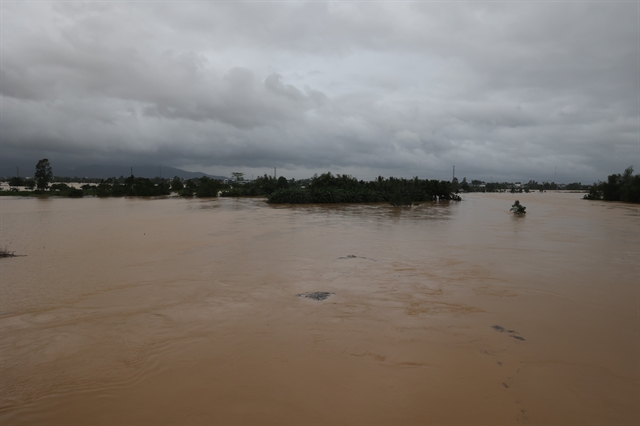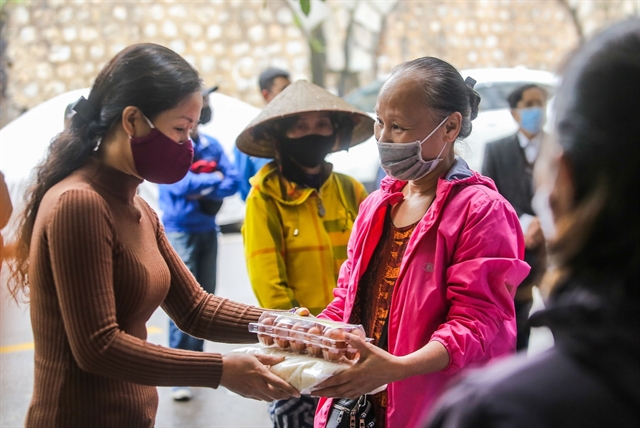 Society
Society

Việt Nam’s per capita income in 2020 declined two per cent to VNĐ4.23 million (US$183.19) per month compared to 2019, the General Statistics Office (GSO) has said.

|
| People suffering from income loss due to COVID-19 pandemic receive food and essential items at a charity event held in Hà Nội late April 2020. — VNA/VNS Photo Anh Tuấn |
HÀ NỘI — Việt Nam’s per capita income in 2020 declined two per cent to VNĐ4.23 million (US$183.19) each month compared to 2019 in wake of the COVID-19 pandemic, the General Statistics Office (GSO) has said.
According to preliminary results of the GSO’s survey on local living standards in 2020, which covered nearly 47,000 households across 63 cities and provinces, the average monthly per capita income increased by 8.1 per cent each year during the 2016-20 period.
The monthly per capita income in urban areas was around VNĐ5.53 million, about 1.6 times higher than that in rural areas (VNĐ3.48 million).
The richest group had an average per capita income of VNĐ9.1 million per month, compared to only nearly VNĐ1.14 million in the poorest group.
In terms of regions, the southeast region had the highest monthly per capita income, at over VNĐ6 million, 2.2 times higher than that of the northern midland and mountainous region which had the lowest monthly per capita income at VNĐ2.74 million.
The southern province of Bình Dương with strong industrial base surpassed both Hà Nội and HCM City to top the nation’s per capita monthly income in 2020. The province’s per capita income was more than VNĐ7 million (US$303.93) per month, followed by HCM City at VNĐ6.537 million, and Hà Nội at VNĐ5.98 million.
Of the total income, earnings from wage and salary accounted for 55.3 per cent, from agro-forestry-fishery activities 11.2 per cent, non- agro-forestry-fishery activities 22.9 per cent, and other activities 10.6 per cent.
Despite the COVID-19 pandemic, the number of poor families has continued to decrease thanks to social welfare policies, the GSO says. Policymakers, however, need to address the wealth gaps between urban and rural areas, the rich and poor as well as between regions.
Việt Nam was one of a handful of countries with a competent handling of the pandemic, keeping both infections and deaths low throughout 2020, while managing to post a positive growth of 2.9 per cent.
Rice down, wine up
Vietnamese seemed to consume less starch per month, from 9.7kg per person per month in 2010 down to 8.1kg per person per month in 2018, and the figure dropped to 7.6kg in 2020.
People in rural areas last year tended to eat more rice compared to urban peers – 8.5kg compared to 6.1kg per person per month. Similarly, people in the lowest income groups had higher consumption of rice compared to people in the wealthiest groups – 9.0kg compared to 6.6kg per person per month.
Meat consumption on the other hand rose slightly but stably through the years, from 1.8kg per person per month in 2010 to 2.3kg in 2020. Consumption of egg increased significantly in 2020, which the GSO attributed to the fact that households favour eggs as source of protein during the many social distancing campaigns.
The consumption of beers and alcohol slightly increased in 2020, from 0.9l per person per month in 2018 to 1.3l per person per month in 2020. The wealthiest group's alcohol consumption nearly doubled the poorest group's (2.4l compared to 1.3l per person per month). — VNS


.jpg)

